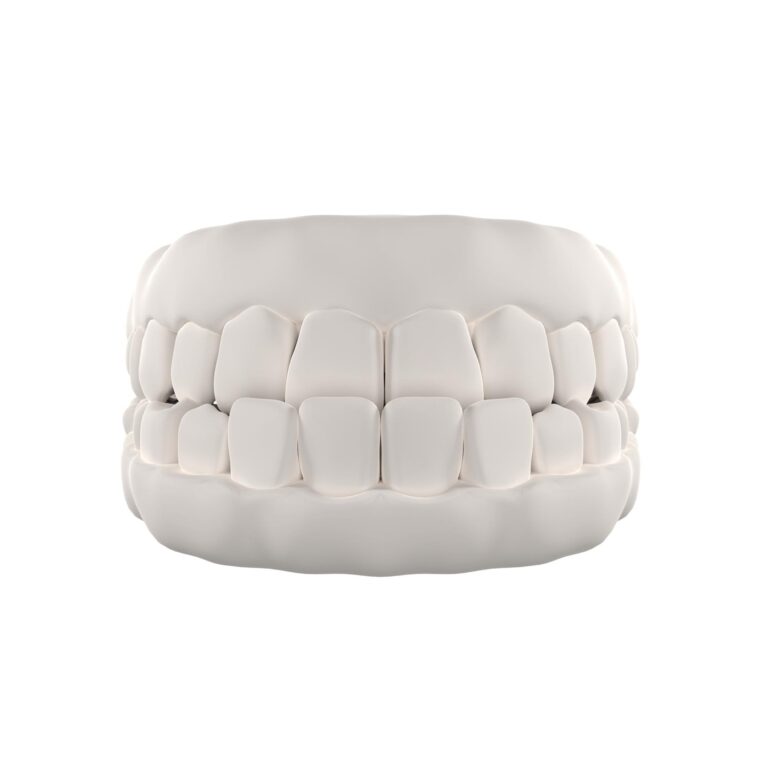Have you ever looked in the mirror and noticed something about your smile that just didn’t sit right with you? A typical dental issue that many people face is underbite. Whether it’s for yourself or someone you know, understanding how to address this issue can make a world of difference.
So, if you are curious about how to fix an underbite, you are in the right place! This blog article is here to explain all you need to know about underbite, including its causes, symptoms, treatment options, and more. So, let’s get started!
What is an Underbite?
An underbite develops when the lower teeth protrude over the higher front teeth, resulting in a misaligned jaw. It can cause issues with chewing, speaking, and general jaw function.
You may wonder what does an underbite look like! Well, It can make the lower jaw jut out, giving the appearance of a prominent chin. In case of a slight underbite, the lower teeth may simply sit in front of the upper teeth when the mouth is closed. However, this can affect the overall facial structure and smile.
While some people see it as a distinguishing trait, others may suffer from the detrimental effects of severe underbite on their dental health and self-esteem. It is critical to contact a dental expert to discuss treatment options to correct an underbite. These options may involve braces, surgery, or other orthodontic procedures.
What Causes an Underbite?
Several factors can lead to an underbite. Some of them are:-
Childhood Habits
Many incidences of this oral condition can be attributed to childhood activities like thumb-sucking or frequent dummy use. They can cause pressure on the teeth and jaw, resulting in misalignment over time. If you are a parent, make sure you are aware of your children’s habits. Make efforts to discourage them.
Misaligned Teeth
Misaligned teeth, commonly known as malocclusion, can lead to the formation of an underbite. When the upper and lower teeth do not fit properly, the jaw’s position changes, resulting in an underbite. Regular dental exams and early management of misaligned teeth can help prevent or treat this problem.
Genetics
Genetics plays a significant role in determining the structure and alignment of the jaw and teeth. Suppose one or both parents have an underbite or a history of malocclusion. In that case, there is a higher likelihood that their children may inherit similar dental traits.
Injury
Accidents or sports-related injuries that impact the alignment of the jaw can cause significant changes to the bite pattern. Seek prompt medical and dental attention after any facial injury to assess and address potential damage to the teeth and jaw alignment.
Tumors
Tumors or abnormal growths in the jaw or adjacent tissues can alter the form and structure of the jaw, resulting in misalignment and biting difficulties. Medical specialists can perform extensive exams to discover and treat such underlying health issues.
What are the Effects of an Underbite on Your Health?
The reason you need to correct an underbite is that it can cause a whole range of health issues that you might not have considered. You might face problems like jaw pain, abnormal breathing patterns, and more. Following are some of the troublesome effects of an underbite on your health:-
Tempromandibular Joint Disorder (TMD)
Do you feel pain or discomfort in your jaw joint? That’s TMD, and it’s a prevalent problem to have TMD with underbite. An underbite can create jaw misalignment, putting additional strain on the temporomandibular joint, resulting in discomfort, clicking, or even trouble eating.
Chronic Bad Breath
Yes, you read that correctly. An underbite can lead to persistent foul breath. It causes your lower teeth to overlap the upper teeth, allowing food particles to become stuck, resulting in bacterial development and odors.
Mouth Breathing
An abnormal bite might also impact your breathing. It may lead to a preference to breathe via your mouth rather than your nose. Mouth breathing can cause dryness in the mouth and throat, which increases the risk of gum disease and tooth decay.
Sleep Apnea
Misalignment of the jaw can and teeth alter the posture of the tongue and soft tissues in the throat, thereby contributing to obstructive sleep apnea. It’s a disorder characterized by breathing pauses while sleeping.
Now, dealing with these troublesome health effects might seem overwhelming. But rest assured! There are various options available to cure underbite. Check out the following section to learn the details about the possible ways to correct the alignment of your teeth and jaw.
How to Fix an Underbite in Adults?
There are various methods available to fix underbite without surgery in adults. Let’s dive into the details and explore your options.
- Braces: You must be aware that traditional metal braces are frequently used to adjust the position of your teeth and jaw to correct any kind of misalignment. But, let’s face it, not everyone is excited about taking it that way.If you don’t want to cope with the extra attention that comes with wearing metal braces, there’s good news for you! There are ways to fix an underbite without braces. The upcoming options discussed in this article are far less evident than those gleaming metal braces. Give them a look!
- Invisalign: It is a popular clear aligner option. Invisalign offers a more discreet way to address your underbite.
- Upper Jaw Expander: It can help widen the upper jaw. The upper jaw expander creates more space and potentially improves the underbite.
- Tooth Extraction: In some cases, tooth extraction may be recommended as part of the treatment plan to alleviate crowding and facilitate the correction of the bite.
How to Fix an Underbite in Growing Children?
- Headgear: Apart from braces and Invisalign, headgear is a pretty popular treatment option for growing children. It can help guide the growth of the upper jaw and improve the alignment of the teeth. It’s essential to address an underbite early in a child’s development to prevent more serious issues as they grow.
How to Cure Underbite in Younger Children?
- Chin Cap or Facemask: The use of a chin cap or facemask therapy, also known as reverse-pull headgear, may be recommended. These devices work by exerting gentle but consistent pressure to encourage proper jaw growth and alignment.
What Surgical Treatment Options are Available for Severe Underbite?
- Orthognathic Surgery: In severe cases, orthodontic surgery may be recommended to correct the underbite. This surgery involves repositioning the upper and lower jaws.
- Le Fort III Osteotomy: It is a complex procedure that repositions the upper jaw to address severe skeletal discrepancies and reduce the pressure on the lower jaw and teeth.
It’s essential to consult with an orthodontist or maxillofacial surgeon to determine the most suitable treatment for your specific case. They can assess the seriousness of your bite issue and develop a customized treatment plan tailored to your needs.
Remember, correcting an underbite is not just about enhancing your appearance. It’s also about improving your oral function and overall oral health.
So, if you are dealing with a bite issue, don’t hesitate to explore these treatment options and take the first step towards a healthier and more confident smile.
FAQs
Can a toddler’s underbite fix itself?
An underbite might improve as a child grows older. A two-year-old’s mouth is still developing, so what appears to be a large overbite may not be. As they develop, their teeth may naturally improve in alignment. Assisting them in quitting thumb sucking or excessive use of a dummy may also help.
Does having an underbite influence your speech?
Sure! An underbite can certainly impair speaking. The tongue’s position is critical for producing sounds. An underbite can make it difficult for the tongue to contact the teeth and palate properly.
This is especially true for sounds associated with a lisp, such as “s,” “z,” “t,” “d,” and “n”. Furthermore, adequate airflow is essential for intelligible speech. An underbite may disrupt airflow in the mouth, affecting how particular sounds are produced.
What is the distinction between an overbite and an underbite?
When you have an overbite, your upper front teeth overlap the lower front teeth. In contrast, an underbite causes your lower teeth to protrude in front of your upper teeth. Both of these oral health conditions can impact bite alignment and general dental health.
Can an underbite result in jaw pain?
An underbite may undoubtedly cause jaw discomfort. This occurs because of the lower teeth protruding in advance of the upper teeth, resulting in misalignment and tension on the jaw joint.
So, if you have an underbite and are suffering jaw discomfort, the two may be connected. It’s always advisable to speak with a dentist for personalized advice and treatment choices!
How can you repair an underbite without braces?
There are some practical solutions other than conventional braces to correct overbite. Some of the examples are orthodontic headgear and transparent aligners. It’s worth researching these choices and speaking with your dentist or orthodontist to determine the best solution for you.

Dr. Patel is an orthodontist and maintains a private practice in Rome, NY. He completed his undergraduate education at the Ohio State University. Then, he earned his Doctorate in Dental Medicine from the University of Pennsylvania School of Dental Medicine in Philadelphia. After earning his doctorate, Dr. Patel attended a three-year, dual-degree residency at Columbia University in New York City. Here, he earned his certificate in Orthodontics and Dentofacial Orthopedics as well as earning a Masters in Oral Biology.


